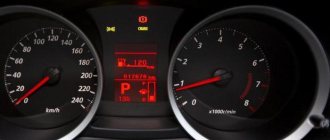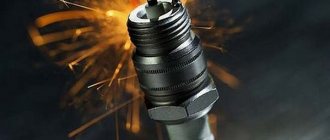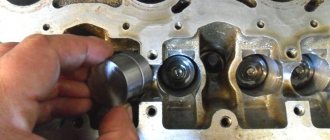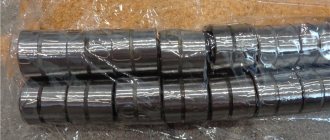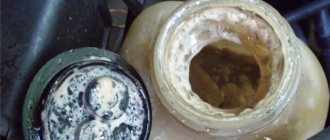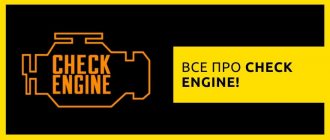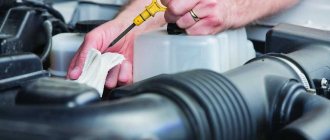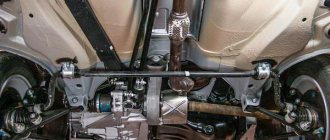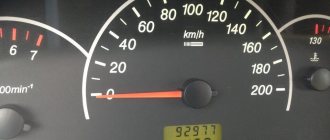Often on numerous forums dedicated to automotive topics, you can read topics about knocking in the engine or cranked bearings. This is an emergency situation in the internal combustion engine. When they say that the liner has rotated, this means that the plain bearings on the crankshaft and on the connecting rods have been torn out of their seats and have become unusable. This is a serious breakdown that happens quite often. Car enthusiasts see the reason in low-quality motor oils from an unknown manufacturer.
But there are many more reasons, and they are not directly related to the lubricant and its quality. To prove this, there are many examples where main bearings fail if branded original oil is poured into the engine. Or vice versa - bearings operate for hundreds of thousands of kilometers on average quality oils. Let's figure out why the crankshaft liners rotate, what factors influence this, and what is the main reason for this phenomenon.
Connecting rod bearing - what is it?
There is one very highly loaded part in an internal combustion engine. This is the crankshaft. The element is not mounted on traditional bearings. Due to design features, plain bearings are used. The design of these very parts may be different. But the constant improvement of engines has led to the fact that a sheet of steel coated with a special anti-friction layer is now used.
This is the connecting rod bearing. These elements are installed in special places - beds. The inserts are fixed. The need to fix these parts is due to the fact that they have holes for oil movement. They must match those in bed. Also, by means of fixation, friction is ensured on special surfaces designed for this purpose. The connecting rod liner is a kind of protective element, thanks to which the service life of the crankshaft is significantly increased.
Why does the liners rotate?
The liners in the engine are installed in special installation locations (liner bed). Installation requires special fixation, since the liners have holes in their body, which allows engine oil to be supplied to them. The indicated holes must clearly coincide with the holes that are drilled in the parts themselves for the passage of lubricant. Also, fixing the liner is necessary taking into account the fact that during engine operation friction occurs on the surfaces of the mating elements.
Taking into account the above information, it becomes clear that if the connecting rod bearing has turned, the reason may be as follows:
- insufficient fixation of the liner;
- strong friction on the surface of the liner;
As is known, friction occurs as a result of the sliding of two bodies relative to each other in the presence of a certain load. The total magnitude of the friction force will depend on the magnitude of the load on the rubbing pair, as well as on the friction coefficient. In order to reduce the friction force in the manufacture of parts, special anti-friction materials are used that have a low coefficient of friction.
As for the liner, anti-friction material is applied to its surface. The crankshaft performs a rotational movement in relation to the liners; at the junction of the liner and the crankshaft, a friction force arises, which tends to rotate the liners in relation to their installation locations. To protect against rotation and displacement, the liner is held in place by a special tendril. Also, during installation, the liners themselves are inserted with a certain interference, the value of which is calculated by the designers of a particular internal combustion engine.
It becomes clear that excessive friction or insufficiently reliable fixation (weak tension) are the main reasons why it is not possible to keep the liner in its seat. Note that during engine manufacturing at the factory, insufficient tension of the liners during the assembly of the internal combustion engine is extremely rare. More often, problems with main or connecting rod bearings appear after the engine has been repaired. In other words, incorrect selection of repair liners and other defects that do not allow the required tension to be achieved lead to turning. Since the crankshaft is subjected to uneven loads, the loosened liners begin to vibrate, the oil film on their surface is destroyed, and the liner can “get caught.” In such a situation, turning is inevitable, since the fixing tendril is simply not able to withstand the moment of turning on the liner itself.
As already mentioned, another reason for cranking of the engine bearings is an excessive friction torque, that is, the design operating conditions of the plain bearings themselves are violated. Normal operation of the liners involves so-called fluid friction, that is, the surface of the liner and the crankshaft journal are separated by an oil film. This avoids direct contact of loaded parts, provides the necessary lubrication and cooling, and minimizes friction.
It is quite obvious that if the oil film is not thick enough or breaks through, the coefficient of friction will begin to increase. The operation of mating parts that are under constant load under such conditions will mean that the cranking torque has increased. To put it simply, the greater the friction force, the more the risk of crankshaft liners turning under such increased loads increases.
An increase in loads in the liner-crankshaft pair leads to a decrease in the thickness of the oil film or to a complete rupture (dry friction). In parallel with the increase in friction force, increased heat release occurs, and local overheating occurs in the friction area. As heating increases, the temperature stability of the oil is disrupted, the thickness of the oil film decreases even more, and the liner can stick to the surface of the crankshaft journal.
It should also be added that the thickness of the oil film between the mating parts directly depends on the speed at which these parts move relative to each other (hydrodynamic friction). The faster the parts move, the more intensely the oil enters the gap that is present between the rubbing elements. It turns out that a thicker oil wedge film is created compared to the same film at a lower speed of movement of the mating parts. In this case, it is necessary to take into account the fact that an increase in the speed of movement of parts increases the friction force, and the heating from such friction also increases. This means that the temperature of the engine oil begins to rise, the lubricant thins out, and the film thickness becomes thinner.
The friction force is also influenced by the precision with which the surfaces of the mating parts are made, the degree of roughness of these surfaces, etc. If, for example, the surface of the liner or journal is uneven, then zones will arise in which almost dry friction will occur or the parts will contact under conditions of insufficient oil film thickness. At the same time, such dry friction zones can also occur in cases where mechanical particles are present in the engine oil, that is, the oil is contaminated.
For these reasons, after assembling a new internal combustion engine or overhauling the engine, the power unit must undergo a break-in process, which involves moderate loads and frequent changes of engine oil. The fact is that loaded pairs must run in to each other, since grinding gradually eliminates possible existing microdefects that affect the formation efficiency and subsequent stability of the formed oil film.
Let us add that the viscosity of the oil in the engine also has a certain effect. More viscous oils cause increased friction torque in loaded pairs. In parallel with this, the thickness of the viscous oil film is also greater at the junction of the parts. However, this does not mean that loaded parts will be protected from increased or dry friction. The fact is that the viscous lubricant may simply not reach the friction point in the required quantity, which leads, in turn, to a decrease in the thickness of the film or even its rupture.
For this reason, it is not so easy to answer which oil is better for bearings and their rotation, taking into account only one viscosity indicator. We should not forget that the most important characteristic is also the lubricity of the oil, that is, the ability of the lubricant to adhere to metal surfaces. The stability of the film of a particular oil under conditions of various loads and temperatures should also be taken into account.
Difference between main and connecting rod bearings
You need to know that there are two types of liners. These are connecting rods and main ones. The first are located between the connecting rod and the crankshaft journal. The root element is similar to the first in its purpose. However, it is located where the crankshaft passes through the engine housing. The inserts vary in size. Dimensions depend on the type of internal combustion engine for which a specific part is made. There are also special repair inserts. They are different from the original new ones installed in the engine. Repair inserts differ only in marks that are multiples of 0.25 mm. So, their sizes are approximately the following - 0.25 mm, 0.5 mm, 0.75 mm, 1 mm.
Description of how the earbuds work
Before we move on to describing the signs, causes and methods for eliminating wear of liners, it is necessary to understand their purpose, types and principle of operation.
There are two types of crankshaft liners - main and connecting rod. In essence, the liners are plain bearings, and their task is to withstand significant loads that occur between the connecting rod and the crankshaft journal. In modern machines (in most cases), the liners are made of ductile aluminum alloys (usually aluminum and tin). They are coated on top with an anti-friction compound.
The main bearings are located between the crankshaft and the place where the crankshaft passes directly through the engine body, in seats called “beds”. The main bearings have holes in their design designed for better oil drainage. That is, the main bearings are sliding bearings for the main journals of the crankshaft. But in fact, the crankshaft rests and rotates on the main bearings.
The connecting rod bearings are located at the bottom of the connecting rod head. And the connecting rods, in turn, are secured using connecting rod bearings on the connecting rod journals of the crankshaft. The function of the connecting rod bearings is that they act as plain bearings for the lower ends of the connecting rods and the crankpins of the crankshaft.
Wear of the liners implies a significant increase in their gaps (the greater the increase, the worse). As a result, the pressure in the engine lubrication system drops. Usually in such cases, a light (oil can) lights up on the dashboard, symbolizing that the oil pressure has dropped significantly. This is especially common on a hot engine, when the oil viscosity is minimal. In such cases, drivers say that “the bearings do not hold oil.” Wear of the liners is a very dangerous problem that can lead to great wear and tear on other engine parts and the engine as a whole. And this can lead to a significant reduction in their resource and damage.
The sound from the knocking of the main liners is usually dull, with a metallic tint. It is easy to detect when the engine is idling, and after that the speed increases sharply (sharply press the gas pedal). At the same time, a large load is placed on them and a knock appears. The same should be done with the connecting rod bearings.
It is not difficult to find out which cylinder the liners are knocking on. To do this, you need to turn off (unscrew) the spark plugs on a gasoline engine or the fuel injectors on a diesel engine one by one. If the mentioned knocking noise disappears when a spark plug is unscrewed, it means that there is a problem in this cylinder.
Reasons for rotating liners
So, the crankshaft is a part that works in harsh conditions, and it has to withstand enormous loads in extreme temperatures. In order for the mechanism to be securely held on the axis and to ensure the correct operation of the entire crank mechanism, liners are needed. The journals on the shaft act as an internal race. Inserts - as external ones.
The internal combustion engine block has channels for supplying lubricant under pressure. Due to the oil film that envelops the liners, the crankshaft can rotate. Why do car owners encounter situations where the crankshaft liners have turned in the engine? There are several possible reasons. Let's look at them below.
Signs and causes of wear
Now let's move directly to the types of damage that contribute to wear of the liners and their failure.
Entry of foreign bodies
Signs . A sign of foreign bodies or dirt ingress is a situation where local damage to the working surface on the liner occurs. In some cases, there may also be some (less) damage on the back of the part. Typically, debris or dirt on the surface of the liner is the root cause of further wear. Therefore, it is necessary to identify this malfunction as early as possible. Otherwise, the wear will spread further and a significant surface area will be damaged, up to 100%.
Causes . As stated above, this situation is caused by dirt or debris getting between the liner and its support. This also causes the formation of places with high oil pressure, in which the oil film is destroyed. In turn, this leads to destruction of the surface of the liner during its operation.
Elimination methods . First of all, it is necessary to check the bearing surfaces of the liner and shaft for damage. If they exist, they must be eliminated. After this, you need to make sure that the surfaces are clean. This is especially true when new liners are installed.
Mud erosion
Signs . A sign of mud erosion is the presence of burrs or inclusions of dirt. Sometimes both. In particularly advanced cases, mud erosion can move to areas near the oil holes.
Causes . The reason in this case is low-quality oil, which contains dirt impurities or abrasive materials.
Elimination . It is necessary to check the operation of all moving engine parts. The lubrication system must be checked especially carefully. It also makes sense to check the oil and air purification system (primarily the filters). When assembling the engine, you must prevent dirt from getting into it. After all this, you must definitely change the oil to a new one.
Corrosive abrasion
Signs . We are talking about the presence of corrosive abrasion on the rear steel surface of the liner. As a rule, traces of corrosion are located closer to the connection of the halves of the liner body.
Causes . In this case, there may be several reasons. Among them:
- Reduced pressing force. This leads to slight movements of the liner body relative to the surface of their support.
- The mounting bolts were loosely tightened during installation.
- There are foreign bodies on the contact surfaces of the liner support.
- Prolonged engine operation at high speeds (especially if this occurs frequently).
- Using inserts with inappropriate dimensions (width).
Elimination . According to the different causes of the problem, the resolution methods may also be different. In particular:
- Tighten the mounting bolts to the torque recommended by the vehicle manufacturer.
- Inspect the seat diameter of the liner support.
- Check the cleanliness of the contacting surfaces between the liner and the support.
- Use the insert of the prescribed size (width).
- Try not to use the engine at high speeds for a long time.
Metal fatigue
Signs . Fatigue can be caused not only by prolonged use of the liner, but also by excessive load on it. Signs of its failure will be a situation when particles of material are literally torn out of its body, especially in places of significant load.
Causes . There may also be several of them:
- Using unsuitable or poor quality earbuds. This leads to their significant overload.
- The main load during operation falls on the edges of the liners.
- Incomplete combustion of fuel in the combustion chamber.
- Incorrect car engine tuning.
Elimination methods . Accordingly, elimination methods may also be different. Need to check:
- axial shape of the shaft journal.
- shape and geometric dimensions of the liner supports.
- engine assembly conditions, and in particular, installation of liners.
It also makes sense to install a new high-quality liner that fits in size.
Wear due to tin penetration
Signs . A significant layer of tin at a specific location on the surface of a steel base. This is usually accompanied by very severe local wear in that area.
Causes . The occurrence of small movements of the liner in its seat, which arose due to the low pressing force.
Elimination methods . Typically, you need to do the following: The first thing is to check the bore diameter of the liner support. Second, check the cleanliness of the mating surfaces of the liner and support. Third, check the tightening torque of the bolts and adjust it in accordance with the manufacturer's recommendations.
Surface corrosion
Signs . Corrosion, depending on its degree, always damages the surface of the liner. It becomes porous and loses its color.
Reason . As a rule, the described phenomenon is caused by the use of low-quality oil, during the decomposition of which acids are released, which cause corrosion.
Elimination methods . It is necessary to inspect the engine, and especially the lubrication system. If there is significant damage to the shaft and liner, they must be repaired. At the end of the repair work, it is imperative to change the oil to a high-quality new one recommended for this machine.
Insufficient lubrication
Diagnostics of wear of liners
Signs . A small amount or absence of oil can lead to abrasion and/or melting of the working surface of the liner. And this in turn causes metal fatigue and damage.
Causes . Destruction of the lubricating film between the liner and the shaft. Because of this, friction increases significantly during operation and the temperature increases. Materials melt. The cause may also be a failure of the engine lubrication system. If the bearing of the liner is deformed or the surface of the shaft journal is damaged, there is a high probability of destruction of the lubricating film.
Elimination methods . It is necessary to inspect the engine lubrication system, including oil cleanliness. It also makes sense to check the condition of the surface of the shaft journal and bearings of the liners. If necessary, repairs must be made. It is also possible to install new liners.
Mechanical wear
The first reason why the main and connecting rod bearings are replaced when repairing an engine is wear. Parts wear out due to mechanical loads. Many people try to save their earbuds, but it is useless. Physics is involved here, and physical processes cannot work any other way. Wear and tear is inevitable. The anti-friction layer on the liner wears off over time. This leads to free movement of the crankshaft. Backlashes appear. As a result, the oil pressure decreases, quite significantly. On most engines that are highly reliable, if the liner turns, this indicates their wear.
Prevention methods
As mentioned above, partial failure of the liners entails increased wear of the engine, and in particular, its lubrication system. Therefore, in order to prevent such a situation, it makes sense to carry out periodic preventive measures. So, first of all, you need to use the engine oil recommended by the car manufacturer . This is especially true for its viscosity. You should not buy very cheap oil, since there is a high probability that it will contain abrasive particles that negatively affect the engine as a whole, and the liners in particular.
It is also worth periodically checking engine parts, their condition, geometry, and cleanliness. When performing repair work, you must always ensure that no dirt gets into the engine and/or lubrication system (oil). There is a so-called “golden rule” for mechanics, which states that a gap of 0.03 mm more is better than a gap of 0.01 mm less. In this case, the liner is guaranteed not to fail, not melt or rattle. Keep your car's engine in good condition and it will serve you for many years.
It is better not to wait until the light on the dashboard lights up indicating low oil pressure. Ideally, you should periodically check the pressure value yourself or at a car service center. After all, the oiler light turns on (that is, the emergency sensor is triggered) only in extreme cases, when the pressure has dropped to critical. It is better to avoid this, especially on engines with significant mileage.
Conclusion
It is necessary to periodically check the condition of the liners, since these seemingly insignificant details can lead to major problems with the engine oil system, thereby significantly reducing its service life. And the sooner the breakdown can be identified and repaired, the lower the costs the car owner will have to face in the future to carry out engine repairs. The replacement procedure can be carried out either independently or at a service station. However, if you decide to carry out the repair yourself, then you must be 100% sure that you will be able to complete the job, since replacement involves a large amount of both dismantling and installation work.
In short, the problem is that I drove without oil and after removing the cylinder head, the valves were bent, but a friend said that it could have turned the liners, how to check if the block on the car does not have holes
Rotating the crankshaft connecting rod bearings
This is also one of the popular faults. Many car owners have faced this problem. But not everyone knows about the reasons. Let's figure out what happens to the element. The connecting rod bearing plate is quite thin.
It is installed on a special seat. The outer walls on the half rings have special protrusions, which, even in a non-run-in and undeveloped engine, rest against the front part of the cylinder block. At a certain point, the seat simply cannot hold the connecting rod bearing. The result is a typical situation - the liner has turned. The plate not only rotates, but also sticks to the crankshaft journal. In this case, the engine stalls and will not start again.
What's the result?
Taking into account the above information, we can conclude that the appearance of knocking in the engine is a sign for immediate cessation of operation of the vehicle. It should also be taken into account that the condition of the liners is greatly influenced by the operating temperature of the power unit. In other words, engine overheating can lead to cranking of the connecting rod or main bearings, engine jamming, etc. In this case, the engine may become completely unusable, as the crankshaft bed breaks, the crankshaft itself, the cylinder block, etc. fail.
As for engine oil, it is necessary to use only those fuels and lubricants that meet all the requirements and necessary approvals of the power unit manufacturer. Also, the oil and oil filter must be changed promptly to prevent dirt and mechanical particles from getting into the lubricant. The lubrication system itself also deserves increased attention, since decreased performance or malfunctions can lead to oil starvation, which significantly increases the risk of bearings turning.
Finally, we add that the gasoline engine needs to be warmed up after a cold start, then you need to drive without loads until the power plant reaches operating temperatures. In the case of a diesel engine, the engine warms up while driving; it is not recommended to sharply load the unit until it is completely warmed up. It should also be remembered that both a new engine and a motor after repair need to be run in, since loaded pairs and mating elements need to be ground in.
Causes of connecting rod bearing failures
Internal combustion engine repair specialists see several reasons why plain bearings rotate. This is often due to excessively thick oil, which contains metal particles. Lubricant with chips has an abrasive effect on the liners. Often there is a complete lack of oil. This especially affects cars with worn oil scraper rings. Some of the lubricant simply goes “down the pipe.” As a result, the liner rotated and the engine was sent for repair. The bearing caps may not be tightened sufficiently together. And finally, one more reason. This is too thin oil. Such products are especially harmful for motors operating under high loads.
Should I change the connecting rod if the bearing has turned?
We kindly request that before you ask a question in the conference and open a new topic, look for the answer to your own question here: LINK 1, here: LINK 2 and here: LINK 3 I am sure that you will find 90% of the answers using the links provided. Also - try searching from the HOME page of the website - the most comprehensive results may be there!
PS If you know the error code, then simply “drive” it into the search line. And pay attention to the fact that the first letter of the code must be typed in the “Latin” layout! Otherwise, search results will not lead you anywhere. The first letter of the code is NOT the Russian letter “P”!
And one more thing - a HUGE request to write in this forum in RUSSIAN - save Albanian for the smoking room.
Newbie
Group: Users Messages: 21 Registration: 10.9.2011 From: Tver User No: 43 472 Real name: Dmitry
Hello everyone! I bought a 2001 Sebring 2.4L not so long ago (a week ago). was moving along the road, at first the car did not pick up speed - the acceleration was sluggish, not as usual, then the oil pressure lamp in the engine came on, after that the engine was immediately turned off, I checked the oil level - everything was normal: I started it - the lamp went out, after I drove another 8 km, heard a knock in the engine, turned it off and drove away on a tow truck. I removed the pan, found that the connecting rod bearing of the 2nd cylinder had rotated, it seems like the EXPERIENCED men in the service center looked at it, said change the bearings and drive on, but at work everyone says that at least you need to remove the crankshaft and have it inspected by a turner, who has a clear installation on a computer He will measure everything and tell you whether the crankshaft needs to be bored.
visually there are no scratches, tactilely everything seems to be smooth.
Please tell me, maybe someone had a similar situation and what to do.
and another small question: is the liner company called Federal model (that’s how it’s spelled) a good one?
Thanks to everyone in advance.
Coordinator of CC Tula
Group: Chrysler Club Member Messages: 1,365 Registration: 11/8/2008 From: Tula-Manganets User No.: 18,004 Real name: Alexander
Hello everyone! I bought a 2001 Sebring 2.4L not so long ago (a week ago). was moving along the road, at first the car did not pick up speed - the acceleration was sluggish, not as usual, then the oil pressure lamp in the engine came on, after that the engine was immediately turned off, I checked the oil level - everything was normal: I started it - the lamp went out, after I drove another 8 km, heard a knock in the engine, turned it off and drove away on a tow truck. I removed the pan, found that the connecting rod bearing of the 2nd cylinder had rotated, it seems like the EXPERIENCED men in the service center looked at it, said change the bearings and drive on, but at work everyone says that at least you need to remove the crankshaft and have it inspected by a turner, who has a clear installation on a computer He will measure everything and tell you whether the crankshaft needs to be bored.
visually there are no scratches, tactilely everything seems to be smooth.
Please tell me, maybe someone had a similar situation and what to do.
and another small question: is the liner company called Federal model (that’s how it’s spelled) a good one?
Thanks to everyone in advance.
Federal Mogul - regular earbuds. But besides the crankshaft, you also need to check the connecting rods.
Life is so short that there is no time to pull the handle and stomp with your left foot.
DODGE CARAVAN 93 3.0L Silver
| Guest_yurii.s_* |
Hello everyone! I bought a 2001 Sebring 2.4L not so long ago (a week ago). was moving along the road, at first the car did not pick up speed - the acceleration was sluggish, not as usual, then the oil pressure lamp in the engine came on, after that the engine was immediately turned off, I checked the oil level - everything was normal: I started it - the lamp went out, after I drove another 8 km, heard a knock in the engine, turned it off and drove away on a tow truck. I removed the pan, found that the connecting rod bearing of the 2nd cylinder had rotated, it seems like the EXPERIENCED men in the service center looked at it, said change the bearings and drive on, but at work everyone says that at least you need to remove the crankshaft and have it inspected by a turner, who has a clear installation on a computer He will measure everything and tell you whether the crankshaft needs to be bored.
visually there are no scratches, tactilely everything seems to be smooth.
Please tell me, maybe someone had a similar situation and what to do.
and another small question: is the liner company called Federal model (that’s how it’s spelled) a good one?
Source: forum.chrysler-dodge.ru
Preference violation
If the liners have turned, this could be the reason. This will not happen in production cars assembled at the factory by qualified specialists. But if the engine has already been repaired, then, most likely, the selection of liners was made incorrectly and the tension was broken.
When the motor is running, the liners experience increased friction torque. This moment tends to rotate the liner. And due to the reduced force that holds the part in place, the risk of turning increases significantly. Under the influence of an uneven load, a weak fit of the friction bearing causes the liner to vibrate. The lubricating film is also damaged. As a result, the part rotates, and the retaining threshold is unable to prevent this.
see also
Comments 31
I had the same failure... I took the connecting rod apart. And everything was sharpened... in general, long live the first engine repair. 1.5 years of normal flight... the only thing is that it is better to change the valve and camshaft seals once every 15,000 km. Although I take Erling...but the burn begins after 10,000 km. and by 15,000 the real oil spill begins there. I take oil at the latest Kutenkuller
Rotated the bearings on the 3rd connecting rod. Crankshaft grinding, connecting rod grinding. Repair inserts and off you go. Greetings from Fordovod
you need to find the reason why it turned / the elbow is clogged / check the oil pump and then everything else
The knee didn’t clog, the pump applied normal pressure, the pressure in the head was 4 for cool, 1.5 for hot at xx with the liner turned, in my town everyone turns the liners on the second cylinder
The knee didn’t clog, the pump applied normal pressure, the pressure in the head was 4 for cool, 1.5 for hot at xx with the liner turned, in my town everyone turns the liners on the second cylinder
what does it mean in your town and I/ lei synthetics 5v30 extra drive hado
I understand that there were 6 people who had the liners turn on such engines, and all of them had the second turn, I drove a hado, but I’ll probably change the oil, it’s precious and it doesn’t do much good, there’s a lot of deposits in the engine, and I took the oil from the officials, although everything May be
Your prices are crazy))). Nobody wants to take them from us like dirt for a hundred square meters.
Buy it up. By the end of the year you will be selling them throughout Russia. $150-200 Particularly valued in the Russian Federation (Russian Federation is a state in Eastern Europe and Northern Asia, our Motherland)
, 3A, DZ, SD, ABK, ADR.
How to determine a breakdown
When turning the main bearings, the crankshaft and cylinder block immediately fail. If the connecting rod bearings rotate, the connecting rod itself, the spindle, and the cylinder block will fail. As a result, the car owner can only benefit from a major engine repair. This failure can be determined. There are some signs of loose liners. One of them is a characteristic metallic knock throughout the engine.
It does not stop even at idle, and with increasing load it knocks even more intensely. Another sign is low oil pressure. If the engine is cold, then there may be no sounds. If the situation is hopeless, the engine will stall, and it can only be revived by repair.
Features of operation
During engine operation, the liners are subject to constant loads due to mutual friction of these parts. Therefore, the installation of the main bearings must be carried out with reliable fixation to avoid their displacement by the rotating crankshaft. To achieve this, measures are taken:
- Firstly, they take into account the characteristics of friction of the parts in question, which manifests itself when they slide against each other under load. Its value is determined by the friction coefficient and the magnitude of the load on the interacting parts. Therefore, to ensure reliable retention of the liners, the impact of the crankshaft on them should be reduced. For this purpose, the coefficient of friction is reduced by using antifriction materials that are applied to the surface of the liners.
- Secondly, the main liners are mechanically held in place. Two methods are used for this. These elements are installed with interference specified structurally. In addition, on each of them there is an additional element called a tendril, which also serves for holding.
Repair and consequences
Typical situation - the liners have turned. What to do? The problem can be solved in different ways, depending on the nature of the damage. In some cases, you can get by by replacing the liners with grinding the crankshaft. In difficult situations, repairs will be significantly more expensive.
If the connecting rod bearing has turned, this is not a serious problem in modern engines. But this does not apply to the indigenous. It often happens that a damaged liner is simply replaced, and the motor continues to work. Experts do not recommend this approach. The service life of the connecting rod-crankshaft journal pair restored in this way can be greatly reduced. A much more acceptable option is to replace the connecting rod with which the problem occurred. Also, if the liners are turned (including VAZ-2172), the lock on the connecting rod will definitely break. It would be more optimal to bore the crankshaft to the next repair size and completely replace the liners and connecting rods. It is imperative to grind the shaft after turning it.
Scores form on the mechanism neck. This is the only way to achieve the desired surface condition and the engine will operate correctly.
Replacement
All official manuals recommend replacing the crankshaft liners with a complete disassembly of the engine, but in fact, this is not necessary. Everything can be done directly from the car. And if with connecting rod bearings everything is more or less clear. Simply unscrew the head, pull out the old part, and then install a new liner. But questions arise with the rest, because at first glance you can’t get to them without removing the crankshaft. But here the experience of naval mechanics comes to the rescue. On large marine diesel engines, the length of the crankshaft can reach 10-15 meters; accordingly, it is not removed to replace the bearings. There is a good technique that allows you to do this directly on the engine. The task of the auto mechanic is to adapt it to his goals. Before starting work, you need to drive the car onto an overpass or inspection hole. This will make access to the motor from below absolutely free. The protection (if any) is also removed and the oil is drained. After this you can start replacing:
- The box is removed. It's better to do this in advance. In some cases, you can do without this, but it is better to prepare ahead of time, this will allow you to waste less time in the future;
- The front cover is removed. The camshaft drive belt (chain) becomes loose. It is better to remove it completely;
- The starter is dismantled;
- Next you need to remove the pan. In principle, there should not be any special problems with this work. But, on some models the front beam will interfere. In this case, you will need to unscrew the motor mounting pads and lift it slightly. After this, you can freely pull out the pallet;
- This will take you to the crankshaft. Usually, replacement starts with the connecting rod bearings. Everything is simple here. Unscrew the screws securing the head, pull out the old bearings, and then install new parts. Before installation, lubricate the bearings with engine oil;
- Before replacing the main bearings, the crankshaft should be lowered. To do this, loosen its attachment to the flywheel. It is enough to lower it by 10-15 mm
; - Next, pull out the liners. The easiest way to accomplish this is to make a device like an aluminum rivet. It is inserted into the grease supply hole and the bearing is pushed out. Sometimes drivers use steel rulers for this, but in this case the working surface of the crankshaft can be damaged.
After removing the liner, be sure to inspect its condition. If simple wear is visible without scuffing, then you can safely install new spare parts. In the case of visible damage, it is advisable to remove the crankshaft and grind it. Reinstalling the liners in most engine models is done by hand. If this fails, you can use the same device that was used to remove the bearings. Lubricate the bearings before installation
Pay attention to the correct installation of the parts; the antenna must fit into the groove intended for it. When assembling, you must remember that the screws must be tightened with the force specified by the manufacturer. Therefore, use a torque wrench to final tighten the fasteners.
This will prevent parts from unscrewing spontaneously. Conclusion. Every car enthusiast has encountered engine malfunctions at least once. Moreover, wear can appear after 100,000 kilometers or after 500,000. Much depends on the specific model, as well as the characteristics of operation. Many people are interested in how to replace crankshaft bearings without removing the engine. It is quite possible to do this, but it will still be easier to remove the motor, and the reliability of repairs directly on the car will be poor.
Quality Motors › Blog › Rotating the liners
Reasons for rotating bearings
The engine is the main unit of a modern car. It is he who, due to the constant combustion of the fuel-air mixture, produces energy that allows the vehicle to move. Part of it is spent on powering attachments and the on-board network, as well as charging the battery. Power plants may differ in the type of fuel, combustion chamber volume, number of cylinders, and the presence or absence of supercharging (turbine or compressor). However, the basic principle of operation remains unchanged - fuel and air mass enter the cylinder in the required proportions. A fire occurs (due to a spark or high temperature), resulting in the release of energy. It forces the piston to move downwards (from top dead center to bottom).
The pistons are connected to connecting rods, which are mounted on the crankshaft. Thanks to their movement, this element rotates, converting energy into torque. Of course, modern engines contain a large number of parts, without which their operation would simply be impossible. However, it is the crank mechanism that is the basis of any internal combustion engine. It is also worth noting that these elements are the most loaded. They are subject to both thermal influences (for example, the average operating temperature of a gasoline power unit fluctuates around 100 degrees) and mechanical influences - when parts interact, friction occurs, which cannot but negatively affect the condition of the system components.
To ensure free movement of the crankshaft, special plain bearings are used, which are called liners. There are two types of such elements - connecting rod and main. The first are installed between the shaft journals and connecting rods, the second - in those places where the shaft comes into contact with the internal combustion engine block. These parts are also supplied with lubricant, which avoids increased friction between the components and, as a result, avoids their accelerated wear. However, of course, it is impossible to say that the impact has been completely neutralized. And, even despite a very serious margin of safety, such parts have a limited resource.
However, there are factors that can seriously shorten the life cycle of these parts. First of all, of course, it is worth noting the incorrect choice of lubricant. Oil that is too thick or too thin cannot create the necessary film that can protect elements from increased friction. Note that we are not talking about specific characteristics of the composition, but about the fact that each internal combustion engine requires a certain type of lubricant. It is also impossible not to mention the low oil level - with constant starvation, wear of the moving elements occurs much faster.
It is worth mentioning mistakes when performing engine overhauls. For example, the earbuds may simply not be tightened correctly. In this regard, under serious load they are torn from their seats. In general, this is precisely the situation that is called among car enthusiasts the rotation of the liners. A clear sign of such a problem may be a knocking sound when the internal combustion engine is running, as well as a refusal to start. Of course, if you detect any extraneous noise, you should immediately stop using the car, as it can significantly worsen the situation. In this case, the correct solution would be to transport the car to the repair site on a tow truck.
Symptoms of rotating bearings
Unfortunately, turning the liners is a breakdown that occurs instantly. That is, any manifestations of defects are usually not observed until the parts fail. Therefore, it will not be possible to prepare (even morally) for such an incident. Perhaps the exception is a situation in which you own a car with very high mileage. In this case, the elements may break due to reaching maximum output. You need to understand that not a single unit, even the most reliable, can work forever.
When turning the liners, a strong knocking sound appears, which accompanies the operation of the motor. It comes from the bottom of the internal combustion engine (block). However, the crankshaft often jams or the connecting rod breaks. This situation is, of course, much more serious. The engine will not start in this position. However, there is no need to rush to purchase spare parts - first you need to conduct a thorough diagnosis. Note that knocking during operation of the power plant may have other reasons. For example, the same symptom is characteristic of a stretched timing chain. However, in this case it will come from the top of the internal combustion engine.
Accurate diagnosis requires partial troubleshooting of the internal combustion engine. Unfortunately, it is not possible to see the condition of the liners otherwise. Of course, this is not an easy operation in itself, so experienced craftsmen first rule out all other possible causes of such knocking noises. Competent specialists also act if they suspect a jammed crankshaft, because failure to start the engine can also be caused by other defects.
Consequences of rotating bearings for the engine
The actions of the driver play an important role in the event of serious breakdowns. Firstly, you need to monitor the behavior of your car and be attentive to the occurrence of emergency situations. Secondly, if the presence of errors in the operation of the system is obvious, the operation of the vehicle must be stopped. If this is not done, the consequences can be much more serious, since in this case the load on both the damaged part and those associated with it increases many times over.
In any case, the consequences of such a breakdown will be very serious, since we are talking about the main parts of the engine. However, it should be noted that failure of the connecting rod bearings is less of a problem than the appearance of main defects. In this case, it is possible to replace the element with a new one and continue operation. However, it is worth mentioning that with this solution, the service life of the connecting rod-liner pair will be significantly lower than when replacing both elements. But when turning the insert, the lock may also be damaged. In this case, unfortunately, you cannot do without boring the crankshaft and installing repair liners.
However, such an operation requires dismantling and troubleshooting the internal combustion engine. Naturally, this is a very complex and expensive process. Often, owners of older cars prefer not to carry out major engine repairs, but purchase a used unit assembled. Of course, it is impossible to determine its exact residual resource, but when choosing reliable suppliers there is a high probability of finding a worthy copy.
Self-repair. Procedure for replacing connecting rod bearings
If you have enough experience and time, as well as a professional tool at hand, it makes sense to take on such work yourself. Under other conditions, such attempts will only lead to aggravation of the situation. It is also, of course, necessary to purchase a set of spare parts and consumables. Note that you should prefer the original elements, since if you save money, this complex undertaking will have to be repeated soon enough. Consequently, all the work done will be useless.
Let's consider the main stages:
• Draining the lubricant • Removing the protection • Partial or complete dismantling of the subframe • Disconnecting the engine cushions • Dismantling the oil pan • Installing the connecting rod to bottom dead center • Dismantling the liner • Cleaning the surfaces • Installing new elements • Assembly • Refilling the lubricant
!Important! Before installing new bearings, they must be generously lubricated with oil. Otherwise, damage may occur even when the internal combustion engine is started for the first time.
When performing operations, serious difficulties are encountered:
• Dismantling of chassis elements. On some cars, this process can be completely separated into a separate event due to its scale and complexity. • If the car has serious mileage, bolts and other fasteners may stick. • After dismantling the liner, it is necessary to carefully inspect the condition of the crankshaft. If there is serious damage to the surface, sanding will not be possible.
!Important! Grinding the crankshaft involves removing it. And this operation will require dismantling and troubleshooting the internal combustion engine.
There are also some subtleties of such work:
• Inserts are replaced as a set. Firstly, they all have approximately the same level of wear. Secondly, the work is too labor-intensive, so doing it again will be much more expensive. • After completing the operations, it is worth replacing the lubricant and filter element. There is a high probability that wear products managed to get into the composition. • It is also necessary to install new gaskets (eg pan seal) as these items are disposable.
Cost of replacing connecting rod bearings
If serious internal combustion engine repairs are necessary, there are two main ways - try to save money by purchasing cheap spare parts and entrusting the work to garage workshops, or perform the operation in accordance with technical requirements. Note that the first option has a right to exist, for example, if you are going to sell the car immediately after the repair. Otherwise, it is recommended to involve competent mechanics. Please note that contacting official dealers will be a waste of time. Most often, they simply refuse to perform such operations, insisting on replacing the unit.
Naturally, this does not mean that even competent repairs give only a short-term effect. The dealer makes good money on other services, so he often does not want to burden his specialists with such complex tasks. Therefore, the optimal solution would be to entrust this work to experienced professionals from a large technical center. For example, you can turn to the specialists of the specialized car service center Quality Motors for help. Here such an operation costs from 8,000 rubles, and after its completion a long-term guarantee is provided, which will not give you any reason to doubt the quality of the work performed.
Source
Add a comment
Only registered users can leave comments. You need to log in (log in to the site using the nickname and password you received earlier). If this is your first time on the site, register using the registration form.
The connecting rod or crankshaft bearings are plain bearings, which are additionally supplied with engine oil from the engine lubrication system. This solution allows loaded parts to move freely and easily, while achieving a pairing of loaded elements in which there are no gaps or backlashes. Such sliding bearings should be understood as a high-strength steel sheet of a special shape, on which a special anti-friction coating is applied.
Rotating connecting rod bearings or crankshaft bearings is a serious problem that must be corrected immediately. Most often, the driver becomes aware of a problem due to the appearance of a distinct, characteristic connecting rod knock or knock of the engine crankshaft. Further operation of the internal combustion engine in which the liner has been rotated is highly not recommended, since breakdowns of this kind cause significant damage not only to the associated parts, but also to other components of the power unit. Next we will talk about what to do if the connecting rod bearing has turned, what the cause and consequences of such a breakdown could be.

